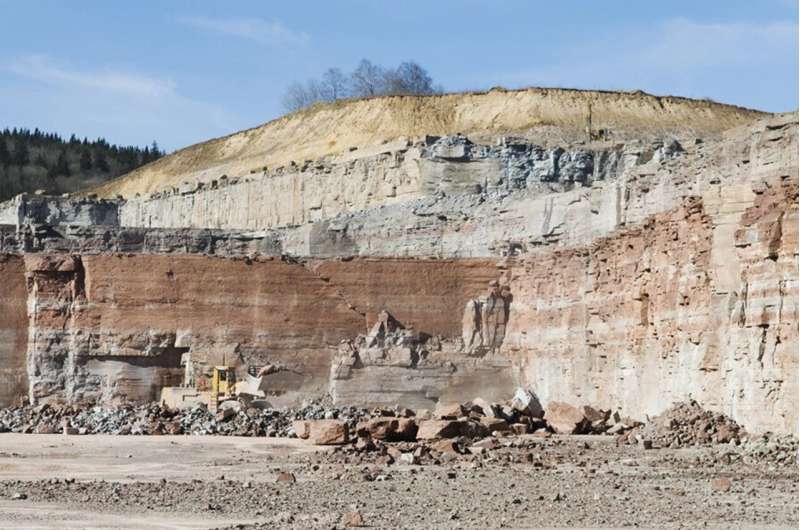This article has been reviewed according to Science X's editorial process and policies. Editors have highlighted the following attributes while ensuring the content's credibility:
fact-checked
trusted source
proofread
Improved processing model can reduce limestone in cement production

The cement industry has long been a central part of infrastructure and development, but its impact on the environment remains a challenge.
"The quarrying of limestone, as in cement production, affects both natural resources and groundwater. It is also very dependent on new mining permits," says Erik Viggh, doctoral student at the Industrial Doctoral School and the Department of Applied Physics and Electronics at Umeå University.
In order to find raw materials for cement to reduce the need for natural limestone, metallurgical slag, a by-product from the steel industry, has been investigated. Slag has been shown to be a suitable substitute, providing a significant reduction in carbon dioxide emissions from the cement process. However, it is unclear as to how the quality of the cement is affected.
Through his research, Erik Viggh has developed a chemical model that can be used by the cement industry to evaluate how changes in the process and use of raw materials affect cement quality. This makes it easier to steer production towards a lower climate impact.
One substance that plays a crucial role in cement production is magnesium. Low levels of magnesium are present in natural limestone, but higher quantities are present in slag. When the raw material is heated to 1,450 degrees centigrade, magnesium oxide melts and becomes part of the liquid mass. During cooling, magnesium binds to the various minerals in the cement. However, too much magnesium can form a mineral called periclase during cooling, which can cause problems such as swelling and cracking in concrete.
To tackle this phenomenon, Erik Viggh has created a process model using advanced calculations. The model simulates the formation of the cement phases, taking into account time, temperature and the composition of the raw material. This makes it possible to predict the chemical content of the cement in all phases. Previously, only lime and silicon were included in the calculation, but now aluminum, iron and magnesium are also included.
To ensure the reliability of the model, the researchers conducted laboratory tests on cement samples made with varying amounts of magnesium oxide. These samples were analyzed to understand periclase formation and the diffusion of magnesium oxide between the particles during melt formation.
The results from both simulations and tests provide insights into the amount and composition of the cement phases formed during heating and cooling. These results also agree well with previously published data, confirming the importance and relevance of the research.
"The improved chemical model together with available thermodynamic data and a newly developed model for cooling has good potential for evaluating the use of alternative raw materials. The work has also identified weaknesses in previous process modeling and provides suggestions for future research efforts when developing completely new manufacturing processes for cement," says Erik Viggh.
More information: Modeling the influence of magnesium from alternative raw materials on the chemistry of Portland cement clinker. umu.diva-portal.org/smash/record.jsf?pid=diva2%3A1789922&dswid=-2721
Provided by Umea University





















